Hayao Miyazaki: The Art of Repetition
Repetition. The very word makes people look up. When a movie or book is accused of repetition, it is often associated with unoriginality. Originality can be taken as a noun or an adjective, but when looking at it as a description, Oxford Dictionary defines it as ‘present or existing from the beginning; first or earliest.’ Originality is, by definition, the earliest form of something whereas unoriginality is the opposite and taken as an insult and a form of criticism against a work, however popular it may be.
This, however, is flawed logic. Some of the most popular, most artistic masterpieces are unoriginal by that strict definition. Perhaps originality needs to be redefined or looked at differently when it comes to the arts. Look at the controversy between Pocahontas and Avatar. In fact, as many Disney fans will know, Disney animation is a big fan of repeating old ideas in new ways, almost following a specific formula that continuously works more often than not. Perhaps originality needs to be defined to something that executes old ideas in new ways. How many times have we seen the good vs. evil concept, or forbidden love, or even magical adventure concepts, even Harry Potter is unoriginal at its core if it is seen simply as a book about a school for wizards, that has been done before. Most concepts, at their core, are more unoriginal than one might think, as popular wiki site TV Tropes may put it.
Studio Ghibli, a popular Anime studio in Japan, also frequently doles out movies that repeats old ideas they have used many times. In fact, Studio Ghibli is very similar to Disney in this way. They have a formula they follow, ideas they repeat, and it works: Beautiful scenery, old women, powerful women, female protagonists, animal companions, and even romance both explicit and implicit. People watch them and they will continue to watch them. It never fails, especially with director and animator Hayao Miyazaki at the reigns and Disney distributing them all in English to the United States and the wider world to increase Miyazaki’s market and audience.
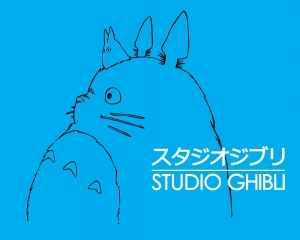
Hayao Miyazaki is a popular Anime film maker in Japan’s Anime industry. Most if not all of his work are associated and distributed by Studio Ghibli, and the English dubs are distributed by Disney itself in America which is partly why Miyazaki films are so popular in the western world. Much like Disney, Hayao Miyazaki has some recurring elements in each of his films that define them. These elements allow watchers and critics alike to distinguish them from other typical Anime films. With Anime films of so many different types, Miyazaki possesses a certain style of storytelling that makes his movies memorable from Spirited Away to Castle in the Sky.
In Spirited Away, Miyazaki introduces Ubaba as an old woman. Old women have a powerful presence in Miyazaki films, though. Princess Mononoke presents to us the wise woman, Howl’s Moving Castle has the infamous Witch of the Waste, and Castle in the Sky has Dola the pirate. Old women are not the only ones repeated. Miyazaki repeats the presence of women who hold a considerable amount of power too, enough to shape events drastically for good or ill. Lady Eboshi from Princess Mononoke, Suliman from Howl’s Moving Castle, and once again, Dola from Castle in the Sky who ironically serves both roles.
Women, in fact, are a very powerful presence in his films. Sophie from Howl’s Moving Castle is not the only one. Mononoke herself counts but there’s also Kiki from Kiki’s Delivery Service, and Shizuku from Whisper of the Heart, a truly underrated classic of his. With Anime being almost synonymous with the male-dominated Shonen genre, this helps Miyazaki stick out as different. Another repetitious thing Miyazaki movies have in common is the faithful non-human companion such as Calcifer, Yakul, No-face and even Kiki’s cat and it doesn’t end there. The presence of an implicit love interest, the main character most often being female, a curse that the main character has to overcome, and the continuous presence of beautiful picturesque scenes for characters to marvel at are all repeated in Hayao Miyazaki films.
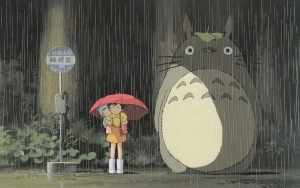
From this spring a question many ask themselves: Is repetition bad? Does it work? Many associate repetition with unoriginality, and in creative media, unoriginality is bad, if not borderline plagiarism to some harsh critics. But what is originality for something to be unoriginal? From books to movies and even comics, the same theme is repeated over and over again. Good vs. evil entails: Harry vs. Voldemort, The Jedi vs. the Sith, Men vs. Orcs, and so on and so forth. Most of them even have your typical wise man from Dumbledore to Ben Kenobi and even Gandalf (and no coincidence these old men tend to die.) Disney Animation tends to repeat their elements with furor, Hayao Miyazaki is no different with certain elements repeated in his movies.
Originality is not something new and unheard of, originality is an evolution from old to new. It is executing the old in a new way never done before. Movies, books and comics can repeat the same notion of good and evil as much as they want, but with evil taking many forms from a greedy tycoon to a super soldier in a green suit. Hayao Miyazaki tends to repeat elements like old and/or powerful women present in his films, and a powerful cast consisting of female main characters. Miyazaki constantly repeats these themes and not only does he do them differently to make them original enough, but when comparing his Anime to the male-dominated Shonen genre like Naruto and Bleach, doling out a healthy mixture of male and female characters make Miyazaki’s films different to others.
All in all, there are five aspects to a regular Miyazaki movie that are frequently reused, sometimes deliberately. Miyazaki deals with main female characters with curses and problems, old women, loyal non-human companions, powerful women, and beautiful scenery looked over during a implicit (or explicit) romantic moment.
Kiki’s Delivery Service
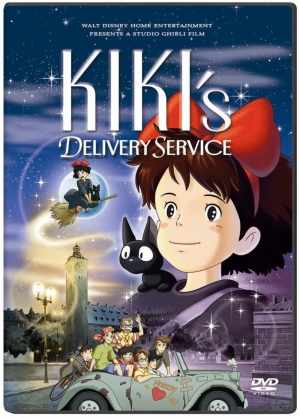
Female Protagonist and her Sidekick: This film is more of a Slice of Life Anime film starring a thirteen year-old witch named Kiki who goes away for a year to train her powers and find her special talent. With her in her loyal black cat named Jiji. Kiki represents Miyazaki’s female main character. She has a lot of things going for her, too. She isn’t simply a lovesick damsel but a girl searching for her own way in life. In other words, it is a coming of age story. However, Kiki also has an inner problem she needs to deal with which serves as her curse. Developed from her coming of age and thinking more about boys and less on her enjoyment of flying, she loses the ability to communicate with Jiji and the ability to fly. This is what becomes her personal curse, which Miyazaki does very often. She becomes like a normal little girl and she remains unable to fly until she finds her motivation again. It took motivation to save Kumori to break that curse.
Love: The presence of love is also familiar. However, Miyazaki does not do explicit love and rarely do the characters ever engage in sexual activity. What he does do is imply the romance. As Kiki is a girl growing up and making her own way, she slowly starts to warm up to a boy named Kumori who frequently follows her and tries to befriend her. Upon returning those feelings, Kiki loses communication with her cat and her flying abilities and must learn to reconcile the two before she is able to regain those powers. Kumori is placed in danger and serves as the motivation Kiki needs. Once she saves him from falling, she is able to fly once more.
The Old and Powerful: Old women are a presence in her story too. Kiki, at one point has a customer who is an elderly lady greatly appreciative of her help. This lady does not appear to be important at first but she serve as the trigger for Kiki’s delivery service going up, and when she lose her powers, she serves as the trigger for Kiki’s delivery service to return by baking her a cake as a thank you gift. The old woman remains nameless but in providing Kiki with wordless wisdom along with the baker lady Osono, Kiki finds her motivation to continue to do what she is good at. In this sense, the women also possess a certain degree of influence. They are seniors and also seem to be very rich. Once Kiki puts her trust I the painter Ursala, the presence of influential women makes itself known.
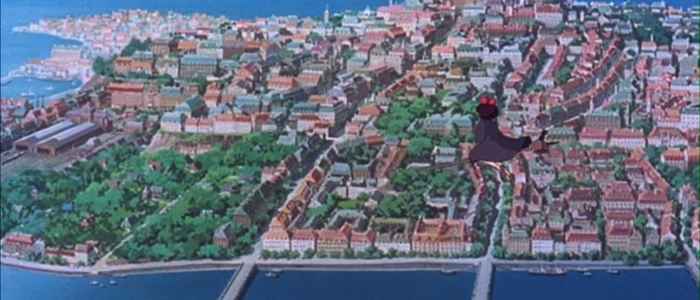
Beautiful scenery: Part of what makes Miyazaki popular are the picturesque scenes painted in the background. His characters tend to marvel at this beauty even if it’s present for only a fleeting second and the scene is always looked over by at least tow characters. Hayao Miyazaki does this very well, and the rarer the scenery is, the better. However, when Kiki arrives at the town, she started talking to Jiji, and definitely amplified the town’s beauty, making it all the more clearer what Hayao Miyazaki was trying to do there. Kiki’s arrival in town is triggered by this beauty. Wanting to choose a town by the sea, she finds one perfect for her. Viewing it from up high, she is attracted to the beauty the town has to offer and decides to take up residence there.
Whisper of the Heart
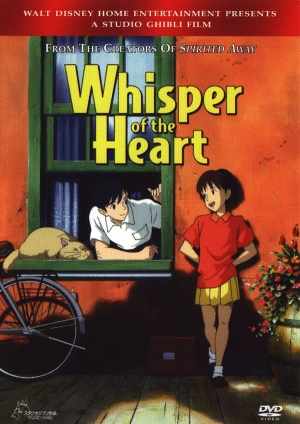
Female Protagonist and her Sidekick: Whisper of the Heart is a movie about a girl named Shizuku. Like Kiki, she is growing up. While her family and friends all have a direction they chose to follow, Shizuku has not. That is her inner curse, a more normal problem of a girl unable to tell what she wants to do in life. All she likes doing is reading books. However, writing the lyrics for an upcoming play adapted from John Denver’s “Take me Home Country Roads”, her friends notice that she is talented in the area of writing. The animal companion, a wandering vagabond cat named Muta, leads her to an old antique shop which holds a figurine of a two-legged cat named Baron. Upon further reflecting with the help of the shop’s owner Shiro Nishi and his grandson Seiji Amasawa, she realizes that her calling is writing. Upon finishing her novel, Shiro reads it and compliments her. All of this would not have been possible without the help of the constant companion Muta, leading her to the Baron, and later to her own imagination. Muta is the imaginative companion.
Love: The romantic relationship in this is very implicit but later grows explicit. It is between Shizuku and Seiji Amasawa. Their relationship begins with her being very impatient with him. With his teasing, she starts getting very defensive. Upon spending more time with him, Shizuku discovers he is good at making violins. He plays a tune and together sing an adapted version of “Country Roads” once again. Later, Amasawa leaves the country to go to Italy and study violin making. Shizuku focuses on her writing while he is gone. At the end, she wakes up to see him waiting for her, having returned a day early, and proposed marriage to her. She accepted, thinking it was a dream, and considering how perfectly it went for her in a movie that made clear it was no Fairy Tale, it may well have been.
The Old and Powerful: In this film, the presence of an old person is signified but this time, it is an old man. The antique shop owner Shiro Nishi plays this role. He serves as the trigger for everything in the film, just as Osono and the elderly lady did in Kiki’s Delivery Service. Old people in Hayao Miyazaki’s films tend to serve as triggers for the story to get on track. Shiro Nishi tells the story of the Baron who was separated from his figurine partner Louise. This sad story inspires Shizuku to figure out the truth and realize her talent of writing. Nishi gives permission to write about the Baron figurine, introduces her to the love interest, his grandson Seiji Amasawa, and even helps his grandson Seiji realize his dream of violin making by convincing his parents to let him to go Italy.
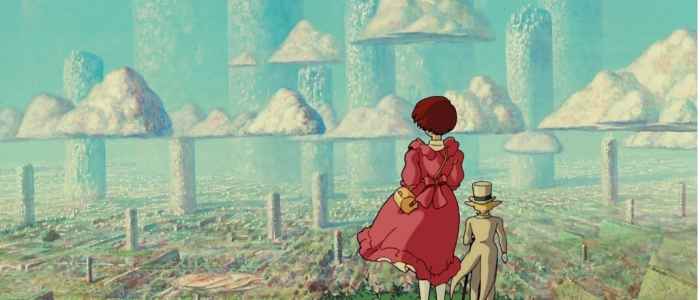
Beautiful scenery: The key romantic sequence between Shizuku and Amasawa is the top of the balcony overlooking the city in the evening. Looking down at the city, it is almost funny how Miyazaki managed to make it look so beautiful when most of the movie’s setting is the cramped apartment where Shizuku happens to live. This is generally what makes their romantic relationship all the more known and it is not the only one. A second beautiful scenery is a fictional, imaginative scenery between Shizuku and the Baron, come to life in her imagination and they look out at a fictional world being created. This scenery is perhaps the most well known as it inspired the spin-off centered on the Baron himself titled The Cat Returns.
Laputa: Castle in the Sky
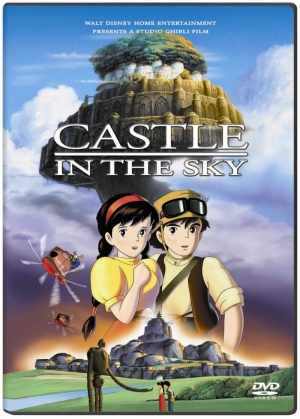
Female Protagonist and her Sidekick: Castle in the Sky is an movie following a girl named Sheeta and her mysterious crystal given to her by her mother. Unlike Kiki and Shizuku, she does not have a coming-of-age story. Hers is purely magical and her inner curse is more to do with the Crystal which later turns out to be a blessing. It starts with her aboard a military ship which is attacked by air pirates led by an old woman named Dola and her sons. Sheeta escapes their clutches and ends up falling off the airship. It is then when her crystal saves her and guides her to a boy named Pazu. After learning of the crystal’s power from Uncle Pom, they venture to the skies to search for Castle Laputa which both the pirates and the military are after. Aiding them are Laputian robots who serve Sheeta with their lives, and the Dola pirate gang. The robots serve as the inhuman companions, as despite their rather limited role, they nonetheless possess the loyalty most non-human companions possess in Hayao Miyazaki’s movies.
Love: As always, the romantic relationship is implicit. It is definitely existent between Sheeta and Pazu considering their concern and closeness despite the fact they met less than a week ago. The two do not face an obstacle to their love more than an obstacle to their very lives. In fact, often for the other’s safety, one would gladly trade his or her life as have been shown when Sheeta agreed to the military’s demands in return for Pazu living a normal life. It is also shown when Pazu braves the Castle Laputa to rescue Sheeta from the military’s clutches and the two do end up flying off together, never separated.
The Old and Powerful: Another common element seen in this movie is the presence of yet another old person. This time, there are two and both serve as triggers. Uncle Pom displays some old wisdom when he teaches them about the aetherium crystal and its ability to power Castle Laputa. However, the most important old woman to signifiy this particular element in this movie is the pirate Dola. The pirate leader Dola is your typical old woman but this time, she displays a certain level newly seen. Dola serves both elements, the old woman and the powerful woman. She is in a major position of power and gives both the ability and mean to reach Laputa. Showing a soft side, she also helps to rescue Sheeta and even obtains the riches she sought. Seeing women in a position of power and influence is not unique to this movie either. More and more movies directed or written by Miyazaki show those common elements more and more.
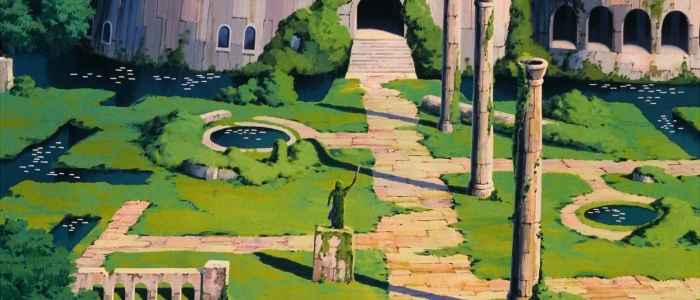
Beautiful scenery: When Sheeta and Pazu find Laputa Castle, the entire place awes them mainly because the entirety of the outside is a garden. The beauty of the garden only hardens Sheeta’s resolve to protect it from the military who seek to exploit or destroy Laputa castle as it was once a major threat to the world. It is interesting how something so beautiful was once was terrible. The whole climax takes place around the castle and its gardens, the military and the pirate gang clash in those gardens and Sheeta and Pazu leave those gardens alone standing while the rest of the castle is destroyed. In fact, it is no coincidence that while the castle is destroyed, the gardens remain untouched, further realizing Miyazaki’s penchant for beautiful scenery.
Spirited Away
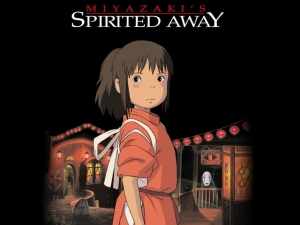
Female Protagoist and her Sidekick: Spirited Away is a film about a girl named Chihiro, whose parents are turned into pigs after eating too much cursed food. As night falls, Chihiro starts seeing shady spirits who slowly take form into pigs, humans and other creatures who work at a bathhouse. A boy named Haku hides her from the witch who runs the house and advises Chihiro to find a job if she wants to save herself. Taking up a job and giving up her old name, she becomes known as Sen and quests to find and rescue her parents. Losing her name and parents, this serves as Chihiro’s inner curse that she needs to break. Along the way, she is helped by none other than a monster called No-face, who has a thing for helping her because she let him into the bathhouse to begin with.
Love: The romantic relationship is a bit more explicit in this one. Where Sheeta and Pazu were only suggested, and Kiki and Kumori were just starting out, this movie openly refers to it as love and it is this love that saves the situation. Chihiro remembers a time in her youth where she was saved from drowning when the river carried her off and she likened that river to Haku, remembering his full name being Kohaku the River Spirit. Remembering his name, he is able to free himself from working in the bathhouse and helps Chihiro rescue her parents and find her own way back with a promise that they would meet again in the future. This love breaks both their curses.
The Old and Powerful: Yet again, the presence of the elderly is present. In fact, it’s doubly present. The witch of the bathhouse, Ubaba, serves as the trigger for Chihiro’s change as she quests to rescue her parents. Not only that, but her sister Zaniba, another witch, is the trigger for the climax and enables Chihiro to rescue her parents to begin with. Like in Castle in the Sky, the trope of old lady and powerful lady are merged in this one, both being in a position of power and both having a good and bad influence on the main character’s life. While each elderly person may be generally good or evil, they all have a mixture of influences, mostly being good, in directing the course of events. Dola the pirate was a villain at first before it was discovered that she has a soft side and Ubaba and Zaniba are most certainly not the only ones.
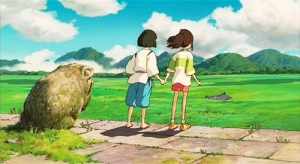
Beautiful Scenery: Most of the movie is spent at the bathhouse and so scenery is not shown as much. The beginning shows the main setting as a very beautiful place before the shades and spirits start coming in at night. Once the bathhouse take its place, the beauty disappears for much of the movie. That makes its last scene all the more special. Upon the ending of the climax and the falling action, Chihiro and Haku look over the bright field of grass with Haku telling her to run through it to find her parents. In fact, running through the field of grass, through a dark tunnel, and into the real world make for a good summary of the movie itself. It started and ended with beauty with the middle being spent in the steamy bathhouse cursed to forget her own name and live as a slave forever.
Howl’s Moving Castle
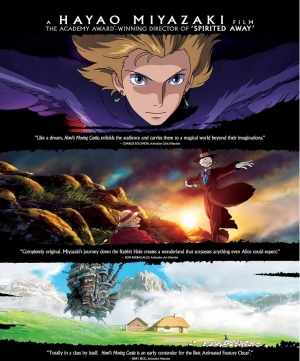
Female Protagonist and her Sidekick: Howl’s Moving Castle is a movie about a girl named Sophie. Sophie works at her parents’ hat shop but after being threatened by rogue soldiers, is rescued by a Wizard named Howl. Howl was on the run from the evil Witch of the Waste. This earned Sophie the witch’s attention and got a curse placed on her to be old, which serves as the curse in this movie. Ashamed of her appearance, Sophie flees into the waste until she happens across Howl’s castle by means of a jumping scarecrow. In the moving castle, she meets Howl’s young child apprentice named Markl and a fire demon named Calcifer who also acts as one of many companions along with Turnip the scarecrow and Heen the dog. Promising to free Calcifer from his contract with Howl in return for the lifting of the curse, Sophie stays as the cleaning lady.
Love: The romantic relationship in this one is very explicit. In fact, one could argue that Miyazaki gets more explicit with his romances the more movies he makes. Sophie and Howl meet up and start developing a relationship, Sophie even begins to love the apprentice Markl. The entire family in the castle grow to love her and in this sense, love is used more of a general sense. Sophie just happens to be lovable. In the end, her kiss turns the scarecrow into a Prince, revives Calcifer, and breaks the curse on Howl. Her own love for Howl also breaks her own curse, though her hair does remain silvery her skin gets smoother and her stature straighter.
The Old and Powerful: As for the elderly, this movie abuses the trope. There are old women everywhere of all types. The main character is cursed to look old and to add to that, she is frequently contrasted with the youthful Howl and the more youthful Markl. The Witch of the Waste, herself an old woman, tried looking young but was brought back to her real age by the powerful Suliman who is also old, and remains with Howl’s group. All these old women are triggers as well. Suliman serves as the powerful female figure trope who leads a faction in the wider plotline. She fights a war, and she also displays some wisdom in knowing what’s best for Howl, as revealed at the end, which also means she is not wholly evil. Even the Witch of the Waste is redeemed in a way when she falls in love with the Scarecrow Prince.
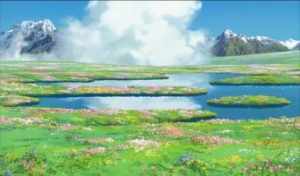
Beautiful Scenery: Once again, beautiful scenery is made very apparent. Once Howl and Sophie start falling in love, Howl welcomes her into the family by showing her his secret garden and gifting it to her. The garden was the placed he lived in as a boy and also the place where he was first cursed to turn into a bird (because Sophie isn’t the only character suffering from a curse here.) Howl’s garden is a vast green land with rivers and flowers, basically the typical beautiful scenery we have all grown used to upon watching a Hayao Miyazaki film and it is huge. Never seen a garden this big before. After a movie based in a wasteland housing a rickety castle, the scenery is quite spectacular to look at. As usual, it also includes the two characters staring out over it in awe and it even becomes part of the climax as Sophie learns about Howl’s past.
Princess Mononoke
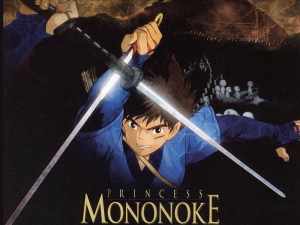
Female Protagonist and her Sidekick: Princess Mononoke is about a Prince, a male lead this time, who is forced to leave his land after being cursed by a demon in an effort to find a way to lift that curse. Despite this movie featuring a male lead, Miyazaki deliberately makes up for it by introducing a female lead who is just as important. As the movie goes on, the audience begins to see just why the movie is named after her. San is the wolf girl and at war with the human race for destroying her forest. Ashitaka, the Prince, attempts to bring balance by stopping the war. With him is his constant, loyal red elk named Yakul. Yakul sticks with Ashitaka through good times and bad. Even though he is an unspeaking animal, he remains by his side, even when it may mean death for Ashitaka. Even when he is freed, he refuses to do so.
Love: The wolf god Moro recognizes Ashitaka’s love for San and San slowly begins to realize her feelings for the Ashitaka. It is because of San, or Princess Mononoke as she is known as by the humans, that Ashitaka remains in the forest against common threats of death. To symbolize this love, Ashitaka gives her his sister Kaya’s crystal dagger as a gift to show how he feels. However, because Ashitaka is a human and San is on the side of the wolves, they often find each other at odds and on opposing sides. San is an extremist for the forest and does not like the idea of negotiating or making peace even though her adoptive wolf brothers do. By the end, they do share their feelings and promise to see each other whenever they can.
The Old and Powerful: This film also has the common Miyazaki elements of a powerful woman heading a single faction and an old wise woman. The wise woman heading the Emishi people serves as the trigger to send Ashitaka away to lift his own curse or else die. Where the wise woman exits, the powerful woman enters. Where we once had Dola and Suliman, we now have Lady Eboshi, the mistress of Iron Town. Eboshi may appear villainous at first but much like Dola, there is redemption in it for her. She looks after her people well, cares for her lepers, gives each one a task to protect and run the town, and trusts everyone with her own life. However, she also shows vulnerabilities when she is used by the monk Jigo who is on hire from Lord Asano, mainly because everyone wants a piece of her valuable iron.
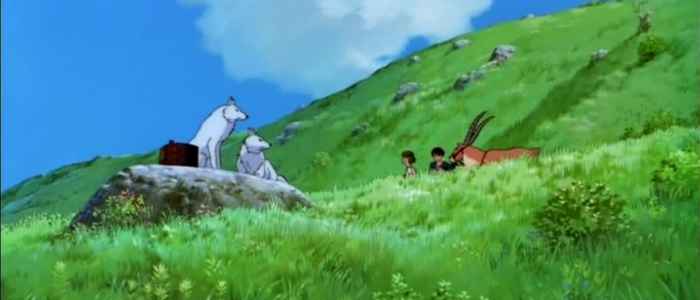
Beautiful Scenery: As always, like in any Miyazaki film, the presence of a picturesque setting exists. The movie is almost made up of this at the beginning. The setting where Ashitaka first starts out is beautiful, the land he rides through when he leaves is beautiful, even the scenery with the first battle is beautiful and it makes no effort to hide the beauty the forest has to offer. The Emishi people live in such a setting but when the ending scene comes around and Ashitaka and San wake up, they find themselves in the middle of a garden and look out at it, admiring the view. The scene is yet another deliberate attempt by Miyazaki to inspire awe in both the characters and the audience at a scene that is meant to be beautiful and as a distinguished director and animator, he succeeds.
It is not a bad thing that some films repeat certain elements. It happens all the time to the extent that originality, by definition, simply does not exist anymore. It is extinct ideal, a term that cannot be used in modern arts. What is original is the way in which the old idea is executed, a way that has not been done before. The romance that is realized in different ways, the different personalities that characters have even if they have been used before, and the factions those characters may lead. In fact, the repetitious ideas are so different, it is not seen as repetition, it is cleverly masked.
Dola may be the same character as Lady Eboshi but the two are inherently different, more so when they are both compared to Suliman. Pitting Calcifer up against Jiji and Yakul, let alone characters like No-face and the Baron and it becomes apparent that however many times a film may repeat old ideas, it really never does get old. The beautiful scenery with a couple looking out over it in awe and admiration is done so many times and each and every time it is appreciated for what it is: Not only a good storyline but a beautiful work of art at its finest.
To add to this, compare Hayao Miyazaki to the wider Anime industry. The wider Anime industry is almost synonymous with the Shonen genre, which is vastly male dominated, seeing as how Shonen, by its very definition, means ‘young boy.’ It can be argued that with a host of female characters, however many times they may be repeated, Miyazaki sets himself apart from the wider industry. The most popular Anime deal primarily with strong male protagonists, Hayao Miyazaki repeats the idea of a strong female protagonist with strong female villains and anti-heroes. These heroes range from the young and romantic Shizuku to the wild and fierce San the Wolf Girl. In this way, Hayao Miyazaki’s repetition is his own strength and that’s if repetition is a bad thing.
What do you think? Leave a comment.


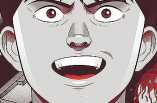

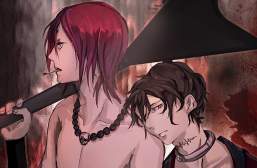
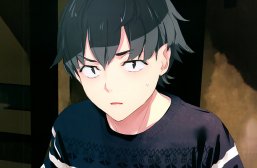
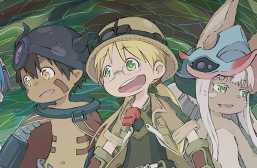
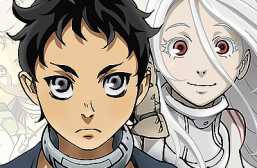
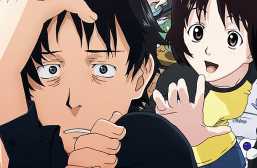
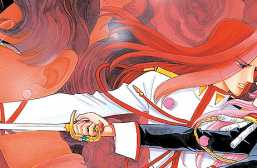
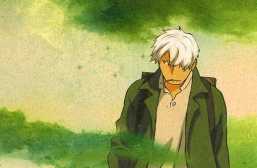
Hayao Miyazaki certainly was a great animator, and his stories are simple, but timeless. Nausicaä of the Valley of the Wind and Princess Mononoke are very similar in story, considering they are both about man vs. nature. Yet the worlds are so different, it doesn’t matter if they are similar because they are both distinctive in many different ways.
They are similar, hence why I picked Mononoke. I wanted to pick different ones with similar formulaic concepts. I love his worlds, especially the forest and the bathhouse.
What a fantastic article!!! I love how you went into the many repetitive aspects and details that all of these movies share, even drawing attention to a lesser known Miyazaki movie like Whispers of the Heart (which is a personal favourite). Another Miyazaki movie that also fits into all of these repetitive categories is Nausicaa of the Valley of the Wind, and I only mention it because it is another one of Miyazaki’s epics (like Princess Mononoke) that I rarely see mentioned in discussions about Miyazaki. I will say though that after reading your article I want to go and have a Hayao Miyazaki movie marathon. Thank you for writing such a wonderful piece.
I must thank you for suggesting this to begin with. It was a great time writing it, especially because I marathoned those six movies and made notes on them. Whisper of the Heart is a favorite of mine too and few mention it. The reason why I didn’t mention Nausicaa was because, though I have watched it, I am not as familiar with it as I am with Princess Monnonoke.
Grave of the Fireflies (not Ghibli or Miyazaki i know). but damn that one made me cry.
I’ve yet to see that one but I want to.
I so love Miyazaki’s work. My favorite is Princess Mononoke.
Kidding? It’s mine too 😀
Really like how his films are pro technology; there are windmills, trains, sustainable energy and flight and so on.
Miyazaki often depicts the ways in which mankind interacts with nature. This is the reason I started to watch his work.
This is especially true in Princess Mononoke and Nausicca Valley of the Wind.
As much as I personally adore the message and stylistic uniqueness of Ghibli studios’ pieces, I think it would be simplistic to say that Ghibli is anti-Disney in the sense that its pieces are not formulaic.
If ever there was an over-riding theme or storyline or trope that prevailed in each and every animation from this Studio it would be a hyper-environmentalism bias (cute plants and beasts only with laughingly-simplistic notion of humans as bumbling nature destroyers), a pro-tradition/ anti-technology/development theme, and an underdog turned hero over considerable odds (even at significant loss).
Ghibli is, of course, a product of Japan, where environmental conservatism and respect for nature and rustic tradition are deeply rooted. The conflict between this and an understanding of the great boons brought to Japan by the rampant technological and industrial progress made over the last two centuries is a recurring trope in Japanese fiction. At the heart of Princess Mononoke – the most successful film in Japanese history for a long time, until Spirited Away succeeded it – is that dichotomy. ‘Progress’ (guns, industrialisation) wreaks bloody havoc and destroys many revered aspects of the world (including killing all the old gods of nature) but it also massively improves the human lot, liberating women and caring for the sick. Through the lead character we repeatedly confront this complex, ambiguous and profound issue in a way that still knocks me for six. Grounded in Japan’s ‘tradition vs progress’ identity crisis it resonates with all of us as we struggle and fail to accommodate both. Arguably Ghibli’s greatest work.
The way I see it, when you see films of that sort of nature, they will have recurring elements. Perhaps it’s not as formulaic as Disney movies since the movies don’t follow a particular formula, but there are elements widely expected of a Ghibli movie. It certainly has an abundance of recurring themes seen in a lot of their work. As I point to their scenery, not to mention women, animals, love interests in different ways depending on the character’s ages.
I think those are consistent themes rather than formulaes. The difference is an subjective one, whether or not the artist is drawing on their old work, and prettying it up with superficial changes, or if they are continueing down a thought or subject they find interesting. Miyazaki is an environmentalist, and believed the innocence of childhood was a top virtue. The “underdog” is not a consistent theme in Ghibli films, anyway: Ponyo, Mononoke and Totoro, as examples, do not position their characters as superior or inferior to others.
Moral absolutism (in terms of environmentalism and traditional morality) runs very deep in Ghibli’s work. And yes, Ghibli has always rejected modern technology even into their production – while the big Japanese anime studios (such as subsidiaries of Bandai-Namco) like Disney, all used computer-assisted production, Ghibli still uses in traditionally hand drawn style.
I don’t want to call Ghibli is anti-modern or ultra-conservative. Pro-environmentalism runs deep in Japan and is hardly consider a right wing ideology by Western standards. Anti-consumerism and anti-war ideologies also run deep in Ghibli stories. Trying to assign political alignment to Ghibli works and methodologies is like trying to decide if George Orwell is a conservative or liberal. In fact, Miyazaki and Orwell share one common trait – they are very clear and stubborn in their views of morality.
Possibly the greatest animation studio that his delivered Oscar-worthy films is probably closing…but Micheal Bay lives on?
My top 5:
5. Ponyo
4. Nausica
3. Spirited away
2. Castle in the sky
1. Princess mononoke
Miyazaki movies are amazing! <3
Interesting list… I did like Ponyo but in my top five, I think I’d say…
5. Spirited Away
4. Howl’s Moving Castle
3. Whisper of the Heart
2. Kiki’s Delivery Service
1. Princess Mononoke
And the gap between these movies is not large. My liking for Princess Mononoke and Kiki’s Delivery Service isn’t large.
Outside of the old toonami anime (DBZ, Gundam,etc) Princess Mononoke is what got me to start watching anime on a regular basis when I was little. Of course totoro will always have a place in my heart as my favorite children movie. but Mononoke is my favorite movie period. Remember going to to Hollywood video just to rent that movie since I couldn’t find anyehre else when I was little.
Princess Mononoke was my first Anime ‘film.’ So, I understand it when people say that Totoro is special but Princess Mononoke, to me, is special to my own heart. And the funny thing is, I got it by accident.
Miyazaki and the Ghibli magic are in their ability to combine high animation art, excellent story telling and high sense of morality into masterful film making.
One reoccurring theme is the corruption that power brings. The ancient civilizations in both Nausicaä and Castle in the Sky were corrupted by their power, and that power corrupts characters in the present in both stories, too.
Yes, one can argue that Dola was corrupted and so was Lady Eboshi and both have power but both are also redeemed somewhat.
The Wind Rises also touches on this idea briefly with the Nazi and Japanese governments looking for more and more powerful weaponry.
I liked how you analyzed all the recurring themes and how they resurface in each film. I hadn’t noticed a lot of them until you pointed them out.
How come nobody recognizes Nausicca as the masterpiece that it is?
It is a masterpiece but I didn’t talk about it because I don’t know it as well as the other six.
Unfortunately, I haven’t seen many Studio Ghibli movies. However, you’ve done a wonderful analysis on how Hayato Miyazaki has a formula and makes all his movies memorable despite the repetition.
Thanks for this article!
They are definitely worth a watch! 🙂
Great article! I enjoyed the comparisons you made with each film. Your article made me garner a new appreciation of Miyazaki’s sublte use of recurring themes. Again, well done.
Thank you. With these themes in mind, it made me enjoy Ghibli movies all the more.
This is the worst article I have ever read. Not one of Miyazaki’s works are the same and they shouldn’t be compared to Disney films. The reason he uses a female protagonist in so much of his work is because he is a feminist. Ffs.
You didn’t read the article.
I’m sorry you feel that way. I am not really comparing them to Disney more than I am bringing up themes that come up more often than not in all his films. One can make this same case without Disney and the reason I brought up Disney is because, broadly speaking, without looking at details, Ghibli is a good comparison because they both have mascots from an iconic feature from them, both have films with female role models but apart from that, both have many other themes that are vastly different than Disney. I do not compare Ghibli to Disney because they all have female characters, but in a broad sense that is meaningless to the wider article.
How do you figure “Not one of Miyazaki’s works are the same” when there are countless critics that cite recurring themes within his work? It seems like you’ve missed the point of this article, which isn’t to say that he is explicitly making the same film over and over again but rather to point out those elements he continually incorporates. Spectre notes three of those elements with examples from a number of his films. Even still there are more elements that could be drawn by reading into Miyazaki’s work.
There are a lot of ways I could read the “they shouldn’t be compared to Disney films” part of your comment but I won’t go into that. Honestly I don’t think there was much to disagree with if you really read the article.
Great read, I love seeing the many odes to Miyazaki’s work since his retirement from feature film.
All of his films are simply amazing.
Always a good thing to talk about Miyazaki. Thanks for the read!
Thanks for reading it 🙂
Back when I was younger my mom got me Princess Mononoke for my birthday. I had no idea what it was and I was not a big fan of anime. It’s now one of my favorite childhood movies and still remember it to this day.
Even when I haven’t watched anime, before or after I got that movie.
That moment when your favorite “childhood movies” has a dude blowing another guys head clean off with an arrow.
I can relate. There was a time when I refused to believe their heads were shot off. It had to be played in slow motion for me to be convinced.
Spirited Away is trippy!
Anime, especially Ghibli productions, is a very visual medium.
That’s one of my points, and Miyazaki relies a lot on visuals but I think its visual appeal to the eyes is what get anyone into Anime. I’m not an Animation expert so I can only say there’s this unknown spice that makes Anime so appealing…
The contrast between Humans/Technology and Spirits/Nature is all over his masterpieces.
Are they ever going to put out a box set of all their movies? I saw a couple on Amazon but those don’t look official..
While I’m not a regular watcher of Japanese anime and animated films, I do respect their storytelling and art styles, as they are unique. I’ve watched maybe 2 or 3 of the movies on this article, and they were great. It’ll be a shame if Studio Ghibli leaves the feature film business.
If it means anything, it I ferociously unlikely Ghibli leaves the film business.
It’s nice to see that Miyazaki has been doing something to reawaken environmental conservatism in Japan while there still are some beautiful places left.
Several of his works follow a character or characters as they age.
Yea, this theme goes beyond simply the physical constraints of growth and ageing.
Oh, yes. Kiki’s Delivery Service, Whisper of the Heart, Howl’s Moving Castle and few others. It’s another recurring theme, coming of age.
loved Spirited away, felt sort of like a Japanese version of Alice in Wonderland.
I love that comparison.
Howl’s Moving Castle is sacred. Princess Mononoke is correctly billed as the Star Wars of the anime and animation world at large, and is on par with Empire Strikes Back in quality of spiritual and entertainment experience, but ‘Howls’ is a far more grand, beautiful, emotional, and yes even spiritual experience than anything in the Star Wars universe save the Dagoba scenes. Few of my other films I deem sacred, such as Spielbergs Lincoln or Coppala’s The Rainmaker, would reach such agreement of sacred in title as Howl’s Moving Castle for people who aren’t just stuffy film critics but lovers of the art world at large and artists themselves. What the first Star Wars inspired a generation of film makers to do in their lifetimes, Howl’s achieved greater influence for a generation of artists of every medium.
Personally, I am of the opinion Princess Mononoke and his best work. The long journey from the east to the west, saving the men from Iron Town, the fight between San and Eboshi (which was epic), and the showdown between Eboshi and the Forest Spirit and that’s not counting the side plot with Lord Asano and the Samurai and the gods like Moro, Okoto, and the Forest Spirit himself. The movie was just so grand and invigorating, it’ always worth a rewatch.
Spirited Away is greatly overrated.
Well, I won’t say ‘greatly.’ I don’t think it’s his best, I think that goes to Princess Mononoke, but I can see why people say such things so I’d say it overrated a tiny bit. Not too much to criticize however, this is coming from someone who simply prefers (and grew up with) Princess Mononoke.
It’s my favorite though, together with Kiki. It’s one of the precious few in which you don’t have Myiazaki’s signature (and foolish) message technology/current society is bad/nature is good.
One thing we “should” all be able to agree with: Hayao Miyazaki is the greatest animator of all time.
Greatest Japanese Animator. When getting western animation involved, it gets more difficult to compare.
My top 3:
Spirited Away
Princess Mononoke
The Wind Rises
I’ll throw a top 5 out there…
5. Howl’s Moving Castle
4. Laputa
3. Princess Mononoke
2. Nausicaa of the Valley of the Wind
1. Spirited Away
1. Princess Mononoke
2. Kiki’s Delivery Service
3. Whisper of the Heart
These three in particular move me because I do love writing so I can relate to Whisper of the Heart, Mononoke is a movie I grew up with (and got by accident) and Kiki’s Delivery Service is just so nice to sit back and enjoy.
Are any of these on netflix?
Not sure. Probably. I’d be disappointedly surprised if they were not.
As a huge Miyazake fan, I approve of this article.
Environmentalism is a key theme.
Miyazaki’s films encourage the assimilation and appreciation of foreign cultural elements. That is admirable.
great article…Miyazaki’s works are all really great. I’m so glad ive watched them all, and I try and make all my friends and relatives watch it as well to show them an example of unique and profound movie making.
My brother does the same and for good reason. In fact, I’d say these films are good gateway Anime for people who are not as familiar with the medium.
Miyazaki Hayao is a simply amazing! I’ve watched all of his major films. Spirited Away, Princess Mononoke, and Howl’s Moving Castle are absolutely my favorites. This article is really interesting. I found myself agreeing to a lot of this.
Spirited Away, to me, was an absolute masterpiece. Never had I watched something that managed to pull me into its world as strongly as Spirited Away did.
Though I like Princess Mononoke more, I might agree with you. Spirited Away really forces you into its world and you really sympathize with the main protagonist.
Princess Mononoke and Nausicaa of the Valley of the Wind are two of my favorites!
Flying and flying machines are one of the most common motifs in his films.
Miyazaki is such a genius he really should be better known here in the US than he is.
1: Kiki’s Delivery Service
2: Spirited Away
3: Nausicaa
4: Howl’s Moving Castle
5: Porco Rosso
6: Castle In The Sky
7: The Wind Rises
8: Princess Mononoke
9: My Neighbor Totoro
10: Ponyo
My list totally differs if you include the other Ghibli films not directed by Miyazaki.
Many of Miyazaki’s films refer to Japanese beliefs, myths and practices.
Grave of the fireflies is his best movie ever, a very old one. the saddest thing i have ever laid my eyes on.
While some of his other films might be more visually beautiful (as that’s what he intended for them) I can and do watch Princess Mononoke over and over again for the sweeping epic that it is.
I love his films and think they’re all quite well constructed, Mononoke is the only one I’ve ever felt to have a collection of truly believable characters, as opposed to storybook cutouts.
Mononoke is his best work. The action, the story, the message – everything about Mononoke says it’s the perfect introductory film for Miyazaki to the U.S. It might not be as representative of his work, but it’s the perfect combination of inspiring and measured pessimism for American audiences.
You always provide such quality work. This is another well written and very informed article!
Thank you for the article!
Uh… There’s nothing about Harry Potter that’s original. I agree that Myiazaki’s works are not “original” in the overvalued sense, but HP is just a bunch of cliches put together by a bad writer who, much like the Twilight Series aberration, appeals to frustrated foolish teenagers and frustrated foolish mothers (in the case of Twilight). Sorry, but for me, despite it’s slight entertainment value as movies (couldn’t stomach the terrible writing of the books), it’s an insult mentioning HP and Myiazaki in the same sentence, unless to use HP as a negative comparison.
Looking at the idea of originality one need read no further than “Hero of a Thousand Faces” but yes, the new spin a work puts on an old idea is the core of modern art today. An interesting comparison this particular director also brings up is works based directly on another’s. Recently Ghibli switched from Hayao’s own original works (Nausicaa, Porco Rosso) to works others wrote (Howl’s Moving Castle, Ponyo, The Cat Returns). Since Spirited Away (original Hayao idea) won the Academy Award, I’ve heard many speak of the falling of Ghibli’s greatness. While Ponyo and Howl both did rather well, they never reached the status of Spirited Away (to be fair probably Miyazaki’s best work) and since then each work like Arietty and The Wind Rises met with less acclaim than Ghibli’s first several films (from Castle in the Sky to Spirited Away), though were still recognised as being superior to most current popular animation. This trend of the works being less critically acclaimed and more based on others’ works is an interesting change and as this article proves, worth looking into in the case of originality as important for a work’s worth.
Am I the only one who absolutely loved Howl’s Moving Castle? It easily compares with the best of his work, Spirited Away, Mononoke, in my opinion.
I forgot to mention The Wind Rises, among those.
I have to largely disagree with this. All film makers have their style, and I don’t think Miyazaki’s is any more “unoriginal” than than anyone else’s. both the pretense of beautiful backgrounds and major role of female characters fall squarely in the field of style, and aren’t particularly idiosyncratic traits at that. And you wouldn’t exactly be hard-pressed to find a movie with elements of love, especially among anime.
the powerful elderly think is a little more unique to Miyazaki’s work, but again, it’s hardly unusual for a writer or director to have their quarks. I would put his fascination with flying machines in this same category.
When you look at the films Miyazaki has made, what really stands out about them isn’t how similar, but how different they all are. The man went from a Lupin the 3rd film, to post-apostolic world, to adventure/fantasy, to slow slice of life, to coming of age, to a WWII pilot turned flying pig. The only two films of his I would say really have a striking resemblance are Nausicaa and Mononoke, as they are essentially the same cautionary tale of man versus nature.
I agree with you there, especially in terms of the use of beautiful backgrounds and the use of strong female characters(which I do appreciate).
It’s great to think of Miyazaki’s works, even the rest of Ghibli’s catalogue, as self contained universes. I have never seen a Spirited Away 2 or Castle in the Sky 2. What made these films so amazing for audiences, I think, was the world it built visually in the hour and half or however long it took to tell a story.
I admit that Miyazaki is a genius and his work looks stunning, but, honestly, I’m not a huge fan. Yes, I enjoyed stuff like Howl’s Moving Castle or Princess Mononoke, but not the fullest. His films are sooo slow paced and, idk, I didn’t like The Wind Rises at all. I felt like I lost my time watching it. :/
Just sayin’, you know?
I love the first few paragraphs in which you bring up the concept of themes being repeated in so many forms and mediums!!! I do not read or watch Anime so I was a little lost and disconnected from much of the article. I do, however, feel the same way about books and movies that depict dystopian societies (1984 to the Hunger Games, to Divergent). As well as similar themes of nationalism, ultranationalism, and eradication of entire species in comics and Marvel superhero films. It’s all so similar and repetitive!
I thought this was a very well written article. However, one repetitive element that abounds in films directed by Hayao Miyazaki which you did not mention (but has been mentioned briefly by other commenters) is that of flying or flying machines.
Both Castle in the Sky and Howl’s Moving Castle feature floating structures. True, the latter moves mostly on the ground, but it indeed takes flight by the film’s conclusion. Porco Rosso and The Wind Rises focus on characters who rely on more traditional aeronautic vehicles. Meanwhile, Nausicaä of the Valley of the Wind and Castle in the Sky (again) showcase fantastical flying machines. In My Neighbor Totoro, Kiki’s Delivery Service, Spirited Away, and Howl’s Moving Castle (again), a character flies through the use of their own power, be they a witch, dragon, or shape-shifting sorcerer. The only Miyazaki movies I can recall that do not utilize flight as a central motif are Princess Mononoke and Ponyo, and I suspect that is because they are more thematically tied into the earth and sea, respectively.
Great article and brings up a lot of good points. I adore Ghibli’s works, especially Spirited Away and Castle in the Sky. It’s interesting that Miyazaki has such a presence and scope in the industry given that animated movies have so many people involved the director usually doesn’t usually stand out. On the top of my head aside from Disney is maybe John Lasseter or Brad Bird or an anime TV director like Shinichiro Watanabe. There are certainly recurring themes whenever going over one person’s work.
However one nitpick I wanted to point out was that Whispers of the Heart is not technically a Miyazaki directed movie. He did write and adapt it, which is why it includes his tropes, but the directing was handled by Yoshifumi Kondo, who was set to direct more Ghibli movies until he passed away in 1998. So he handled the scenery and artwork.
But it’s good that you point out that while the scenery is gorgeous it does not take away from a moment or plot of the the film, which is something to be admired. It’s something one would wish there were more of in American culture and animation.
I wish I had this kind of information when I did my report on him. Miyazaki is great.
Check out my Prezi about Spirited Away!
http://prezi.com/grxvbxffz4hs/?utm_campaign=share&utm_medium=copy
Continuity in an artist’s work allows for his/her individual pieces to be grouped together in such a way that their distinctive voice and message becomes clear. This extends throughout all mediums — Faulkner, for instance, can be very repetitive in his themes (and most of, if not all, of his stories take place in the same county).
Like you point out, this isn’t unoriginal, but rather part of the greater footprint they want to leave behind.
I coulnd’t agree more, man. I know someone in my faculty that only knows to give conferences about Miyazaki, because he knows they will sell. And people applaud that… damn it, almost anybody could make a conference about Miyazaki or Ghibli. I think there are much better anime directors, such as Mamoru Oshii, Satoshi Kon, or Shinichiro Watanabe, and people just talk about Ghibli this, Ghibli that… a bit boring.
I do like Miyazaki’s work, but I can’t find why he’s the best of the best. I think he’s a bit overvalued, mates.
I agree with the choices that were made to explain the Studio Ghibli formula, and I acknowledge that indeed, Studio Ghibli movies used to represent that perspective seem to point this perspective as well. Overall, your article was a sound, stoic, and well analysed article that managed to indicate the importance of how repetition should be viewed and that it isn’t necessary that repetition will be considered a bad thing.
Nevertheless, I do feel that I should pinpoint something which makes Studio Ghibli at times better than the “repetition” angle given here. There are three movies from Studio Ghibli that are unique (from the Studio Ghibli perspective) in their presentation, story, and overall ambience:
1) Grave of the Fireflies
2) The Cat Returns
3) The Wind Rises
Grave of the Fireflies has been talked of, and even analysed on numerous occasions and it certainly cannot be denied that it holds a significant influence towards how war and its effects can be crippling on a society. (https://secure.apu.ac.jp/rcaps/uploads/fckeditor/publications/journal/Volume33-RJAPS.PDF#page=41) and this (https://idea.library.drexel.edu/islandora/object/idea%3A4477/datastream/OBJ/view)
But, on that note, it doesn’t mean that this movie (Grave of the Fireflies) has a repetition formula being used – it can best be seen as an anime which used aspects of propaganda films and merged them with a harsh critique of society, as the movie itself is (in my opinion) exploitative.
As for The Cat Returns, it has a strong female protagonist, who is supported by good supporting cast and especially the cat himself. BUT the movie doesn’t have an old man or woman aiding them (the Prince is around the same age as the Cat, if not younger; and the Girl’s mom is not so old as to be considered a “wise old sage”). Furthermore, there isn’t an environmental message in the movie itself, but is a straightforward story told through decent and well thought out characters. While it can be argued that this is repetition, I would disagree on the basis of the characters and their personalities (which made them unique). Also, the ending was something only ubiquitous to Studio Ghibli.
Lastly, “The Wind Rises” – the whole story proceeds as an autobiography and concludes as such. The beauty of this anime, is how it was seen as (assumably) the last which Miyazaki was going to make (http://entertainment.time.com/2014/02/20/the-wind-rises-review-hayao-miyazaki/). Nevertheless, it holds merit on its story, on its characters, on its score, on its environment, and most definitely on how the plot unfolds and is concluded.
That is my perspective on your article. It is well thought out and it certainly holds up strongly. BUT, Studio Ghibli is a master of its craft, and is able to present movies that are certainly unique and intriguing in their own right.
I never saw Miyazaki’s movies in this light; it has changed my view. I love his movies but thought character progression was what they all had in common at most. I love his movies for their scenery and story lines; they’re inspiring. Nice observation and article!
Repetitive films bring familiarity and comfort.
I vaguely remember Kiki’s Delivery Service so very long ago. I have a vague recollection of it.